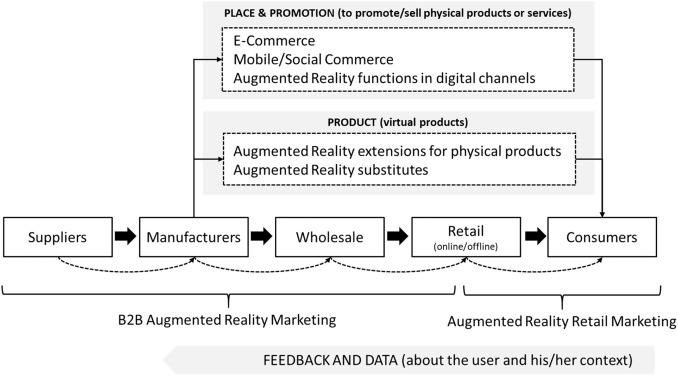Future-Proofing Education: Top Strategies Policymakers Need for Lasting Reform
Education stands at the crossroads of innovation and tradition, demanding a vision that not onyl addresses present challenges but also anticipates future needs. Future-proofing education is no longer a luxury—itS a necessity. For policymakers, the call to action is clear: implement strategies that guarantee lasting, meaningful reform. This article explores comprehensive approaches, practical tips, and global best practices to help shape resilient educational systems for generations to come.
Why Future-Proofing Education Matters
Educational landscapes are continually evolving due to advances in technology, shifts in workforce demands, and changing societal expectations. By future-proofing education, policymakers lay a foundation for:
- Ensuring all learners gain essential, transferable skills
- Promoting equity and closing achievement gaps
- Adapting curricula to emerging global trends
- Fostering lifelong learning and innovation
Changes enacted today must be sustainable; otherwise, students risk graduating into a world they’re unprepared for.
Top Strategies for Lasting Education reform
To truly ensure educational systems are built to last, policymakers must embrace holistic, scalable, and inclusive strategies.
1.Embrace Flexible and Adaptive Curricula
- Modular Design: Enable easy adaptation as new skills and technologies emerge.
- Project-Based learning: Foster creative problem-solving capacities.
- Continuous Review: Schedule regular curriculum evaluation cycles.
Versatility is key to addressing unforeseen societal or economic shifts. Adaptive curricula prioritize learning outcomes over rigid content and allow for integration of new knowledge fields.
2. Prioritize Digital Literacy and Technology Integration
- Introduce Coding Early: Teach computational thinking from primary grades.
- Support Teacher Up-skilling: Provide ongoing professional progress.
- Invest in infrastructure: Ensure high-speed internet and devices for all students.
Digital literacy is foundational for career readiness and personal growth in the 21st century. Policymakers should champion robust digital education plans, targeting both urban and rural communities.
3. Promote Equity, Accessibility, and Inclusion
- Universal Design for Learning (UDL): Incorporate diverse learning needs.
- Socioeconomic Support: Allocate resources to disadvantaged areas.
- Community Partnerships: Engage local organizations for holistic support.
Lasting reform hinges on ensuring every student, regardless of background, has fair access to quality education. Inclusion must extend beyond the classroom, involving community, family, and student voice.
4.Foster Lifelong Learning and Skills Development
- Career Pathways: Align K-12, higher education, and vocational training with evolving job markets.
- Micro-credentials: Recognize informal and nontraditional learning experiences.
- Mentorship and Internships: Connect learners to real-world experiences.
Education reform must reflect the reality that skills can become obsolete rapidly. Policies must support continuous, accessible upskilling throughout life.
5. Leverage Data-Informed Decision Making
- Real-Time Analytics: Use educational technology for ongoing outcome tracking.
- Evidence-Based Policies: Ground reform in empirical research.
- Transparent Reporting: Share results with stakeholders to foster accountability.
Data is indispensable for assessing what works and scaling successful practices. Policymakers should embrace a culture of continuous improvement informed by rigorous evidence.
Benefits of Lasting Education Reform
A forward-thinking approach creates enormous advantages for individuals and society:
- Economic Growth: Skilled and adaptable workforce responds better to market needs.
- Social Cohesion: Inclusive education promotes mutual understanding and civic engagement.
- Innovation Ecosystem: Cultivates creativity, entrepreneurship, and technological advancement.
- Global competitiveness: Prepares learners to thrive in an interconnected world.
Practical Tips for Policymakers
Translating vision into reality demands actionable steps. Here are practical tips to guide effective policy implementation:
- Involve Stakeholders Early: Teachers, students, parents, and local communities offer invaluable perspectives.
- Pilot Programs: Trial innovative approaches before scaling nationwide.
- Invest in Professional Development: Empower educators to lead change from within.
- Monitor Outcomes: Use defined metrics to track progress and make timely adjustments.
- Encourage Intersectoral Collaboration: Leverage partnerships with tech companies, NGOs, and local enterprises.
- Secure Sustainable Funding: Budget reform initiatives for long-term feasibility.
Global Case Studies: Future-Proofing in Action
Examining successful education reforms worldwide can inspire locally relevant solutions:
Finland: Student-Centered Learning
- No standardized testing—focus on formative assessment and teacher autonomy.
- curricula designed around real-life themes and student interest.
- Continuous teacher education and collaboration.
Finland’s system consistently ranks among the world’s best for its dynamic,student-focused reforms.
Singapore: Holistic Talent Development
- early adoption of technology and STEM education.
- Frequent curriculum reviews and adaptation for economic trends.
- Strong links between education, industry, and government.
Singapore prioritizes responsiveness, ensuring students graduate with skills relevant to future markets.
Estonia: Digital Revolution
- World-leading investment in digital infrastructure for schools.
- Mandatory computer literacy programs from elementary level.
- Government mentorship for tech-startup integration into classrooms.
Estonia’s rapid embrace of digital learning shows the power of tech-forward policy making in education reform.
First-Hand Experience: Voices from the Field
“We saw dramatic improvements when our district allowed teachers to test new digital projects and share results. Policy flexibility let us better meet our students’ unique needs.” — Jessica B., District Administrator
“in our school, future-proofing means having open conversations with students about skills they want to learn.Small changes, like introducing basic coding, have sparked big ideas.” — Samir P., Elementary Teacher
Overcoming Challenges to Sustainable Reform
Lasting educational reform is never without obstacles. Policymakers must prepare to address:
- Resistance to Change: Transparent communication and gradual implementation help build trust.
- Resource Constraints: Strategic partnerships and prioritizing high-impact interventions make the most of limited budgets.
- Policy Continuity: Safeguard reforms through bipartisan consensus and clear legislative frameworks.
- Data Privacy Concerns: Implement robust cybersecurity and ethical standards for digital education tools.
Conclusion: Building the schools of Tomorrow
Future-proofing education is a visionary yet practical endeavor, combining adaptability, inclusiveness, and innovation in all aspects of the learning experience. Policymakers equipped with the top strategies outlined above can drive lasting change, empowering learners and societies to thrive in unpredictable times. By prioritizing flexible curricula,technology integration,equity,lifelong learning,and data-driven leadership,we can build educational systems that are poised to meet not only the demands of today but the challenges of tomorrow.
True lasting reform is an ongoing journey—one built on collaboration,reflection,and relentless pursuit of better learning for all. Start today, and create the future of education we all deserve.

